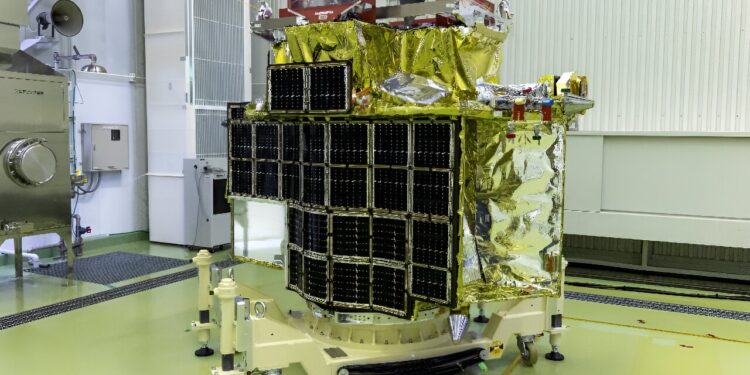If the “SLIM” lander lands successfully next month, it would make Japan the fifth country to land a working probe on the Moon, after the United States, Russia, China and India.
Japan’s SLIM space probe entered the Moon’s orbit on Monday, a major step toward the country’s first successful moon landing, expected next month.
The Smart Lander for Investigating Moon (SLIM) is nicknamed “Moon Sniper” because it is designed to land within 100 meters (328 feet) of a specific target on the lunar surface.
If successful, the landing would make Japan the fifth country to have successfully landed a probe on the Moon, after the United States, Russia, China and India.
On Monday, SLIM “successfully entered the Moon’s orbit at 4:51 p.m. Japan time” (07:51 GMT), the Japan Aerospace Exploration Agency (JAXA) said in a statement released Monday evening.
“Its trajectory change was carried out as initially planned, and there is nothing extraordinary in the probe’s conditions,” the agency said.
The lander’s descent to the Moon is expected to begin around midnight Japan time on January 20, with a planned landing on the surface 20 minutes later, JAXA said.
The H-IIA rocket took off in September from the southern island of Tanegashima with the lander on board, after three postponements linked to bad weather.
JAXA said this month that the mission would be an “unprecedentedly precise landing” on the Moon.
The lander is equipped with a spherical probe developed with a toy company.
Slightly larger than a tennis ball, it can change shape to move across the lunar surface.
Compared to previous probes that have landed “within a few kilometers or more” of targets, SLIM’s purported margin of error of less than 100 meters suggests a level of precision once thought impossible, thanks to the culmination of an effort to 20 years of researchers, according to JAXA.
With advances in technology, demand is growing for locating targets such as craters and rocks on the lunar surface, Shinichiro Sakai, JAXA’s SLIM project manager, told reporters this month.
“Gone are the days of just wanting to explore ‘somewhere on the Moon,'” he said.
It is also hoped that SLIM’s accuracy will facilitate sampling of lunar permafrost, bringing scientists closer to uncovering the mystery of water resources on the Moon, Sakai added.
Japanese missions failed twice: one public and one private.
Last year, the country unsuccessfully sent a lunar probe named Omotenashi as part of the US Artemis 1 mission.
In April, Japanese startup ispace unsuccessfully attempted to become the first private company to land on the Moon, losing communication with its craft after what it described as a “hard landing.”
© 2023 AFP
Quote: Japanese lunar lander enters lunar orbit (December 25, 2023) retrieved December 27, 2023 from
This document is subject to copyright. Apart from fair use for private study or research purposes, no part may be reproduced without written permission. The content is provided for information only.



